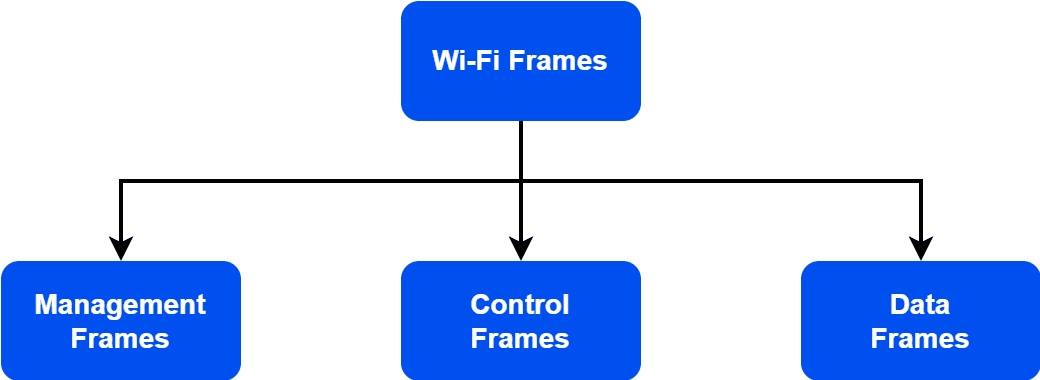1. Overview
In this tutorial, we’ll explore and discuss each field of the Wi-Fi frame format in detail.
2. Introduction to Wi-Fi
Wi-Fi is a popular wireless network protocol. Moreover, it allows uninterrupted wireless communication between devices, enhancing flexibility in networking.
Wi-Fi technology uses IEEE 802.11 networking standards. These standards provide guidelines for enabling internet access for electronic devices to exchange data using radio waves. Additionally, the IEEE 802.11 networking standards are used in Wireless Local Area Networks (WLANs), mobile devices, home automation, enterprise networks, and industrial applications.
The devices connected to Wi-Fi transmit data within a local area network (LAN). Additionally, we use a hardware device known as the wireless access point, which is responsible for transmitting and receiving Wi-Fi signals. Moreover, we must authenticate our devices via the wireless access point before joining the network. After authentication and connection establishment, the devices can start exchanging data.
Furthermore, to protect data from unauthorized access, Wi-Fi uses the Carrier Sense Multiple Access with Collision Avoidance (CSMA/CA) technique for managing access. Moreover, Wi-Fi ensures data integrity by using encryption techniques.
3. Wi-Fi Frame Format
Wi-Fi frames are the fundamental data transmission units in Wi-Fi networks. When multiple devices are connected to a Wi-Fi network, they exchange data using Wi-Fi frames. Wi-Fi frames contain all the information required for communication, such as source address, destination address, payload, and control flags.
Now, let’s take a look at the Wi-Fi frame format:
Next, we’ll discuss each field of the Wi-Fi frame.
3.1. Frame Control
The first field is the frame control. It includes crucial information demonstrating the purpose and behavior of the frame. Additionally, it manages the frame transmission and processing. Hence, the frame control field is important in optimizing performance and ensuring the reliability of Wi-Fi networks. Let’s explore the subfields of the frame control:
Subfield Name
Description
Protocol Version
Contains the version of IEEE 802.11 to ensure compatibility of devices using Wi-Fi
Type
Defines the type of frame
Subtype
Specifies whether it’s a Request to Send (RTS) or Clear to Send (CTS) frame
To DS
Indicates whether a frame is going toward the access point or not
From DS
Indicates whether a frame is coming from the access point or not
More Fragment
Indicates whether the data transmission is completed or not
Retry
Provides us with information on whether we need to retransmit the previous frame or not
Power Management
Provides power-saving options
More Data
Indicates whether the sender has more data for transmission or not
Protected Frame
Provides encryption-related information
Order
Contains information regarding the order in which the frames are being received or sent
3.2. Duration or Connection ID
The second field in the Wi-Fi frame structure is the duration or connection ID. It contains data regarding the total duration of the current transmission. Based on the duration value of the current transmission, we reserve the transmission medium.
Additionally, it provides a unique connection identifier, which is helpful in identifying a specific connection in a network. Moreover, the duration field is crucial in managing the medium’s access and avoiding collisions between other transmissions.
3.3. Addresses
As we can see, the Wi-Fi frame structure has 4 address fields. Wi-Fi is a data link layer protocol that deals with MAC addresses. Therefore, all the address fields contain the MAC addresses of different devices. Based on the nature and direction of the frame, these address fields contain the MAC address of the source device, destination device, receiving access point, or sending access point.
Thus, the address fields are essential for correctly sending and receiving data.
3.4. Sequence Control
Another vital component is sequence control. It stores the frame number and manages fragmentation. Thus, the sequence control field helps us to detect duplicate frames.
Additionally, it ensures data is transmitted in the correct sequence to the upper layers.
3.5. Frame Body
The frame body field holds the actual payload. Its size isn’t fixed and can contain data up to 2312 bytes. The payload contains TCP segments, application data, and IP packets.
In secure Wi-Fi networks, various encryption techniques are used to protect the integrity and confidentiality of the data.
3.6. Frame Check Sequence (FCS)
The frame check sequence field contains a checksum value to detect errors in the data. Typically, during data transmission, some bits might get altered in the payload data due to the noise in the medium.
Therefore, we calculate the checksum value over the entire frame to detect the errors accurately.
4. Types of Wi-Fi Frame
Now, let’s discuss the types of Wi-Fi frames. Typically, we can classify Wi-Fi frames into management, control, and data frames:
We use management frames for network discovery, authentication, association, and disassociation. On the other hand, we can utilize control frames to manage access to the wireless medium. They ensure collision avoidance and efficient data transmission.
Finally, data frames contain the original data that devices within a Wi-Fi network exchange with each other.
5. Conclusion
In this article, we presented the structure of the Wi-Fi frame.
Additionally, we discussed each field part of the Wi-Fi frame format in detail.

